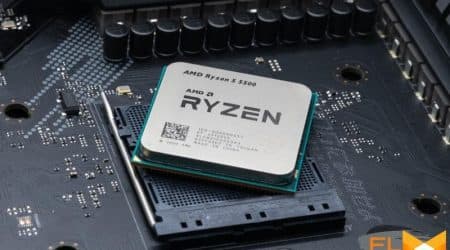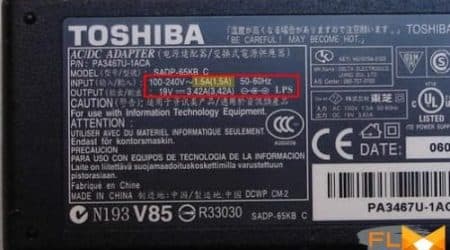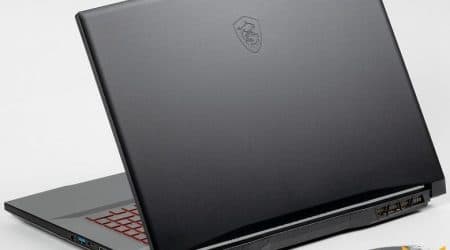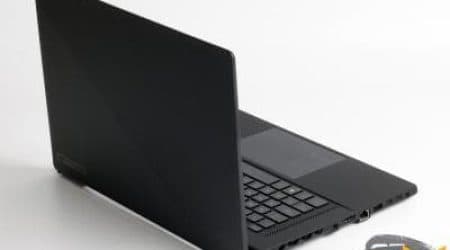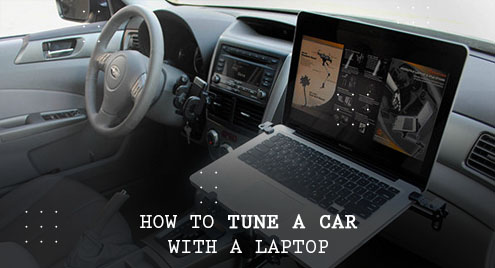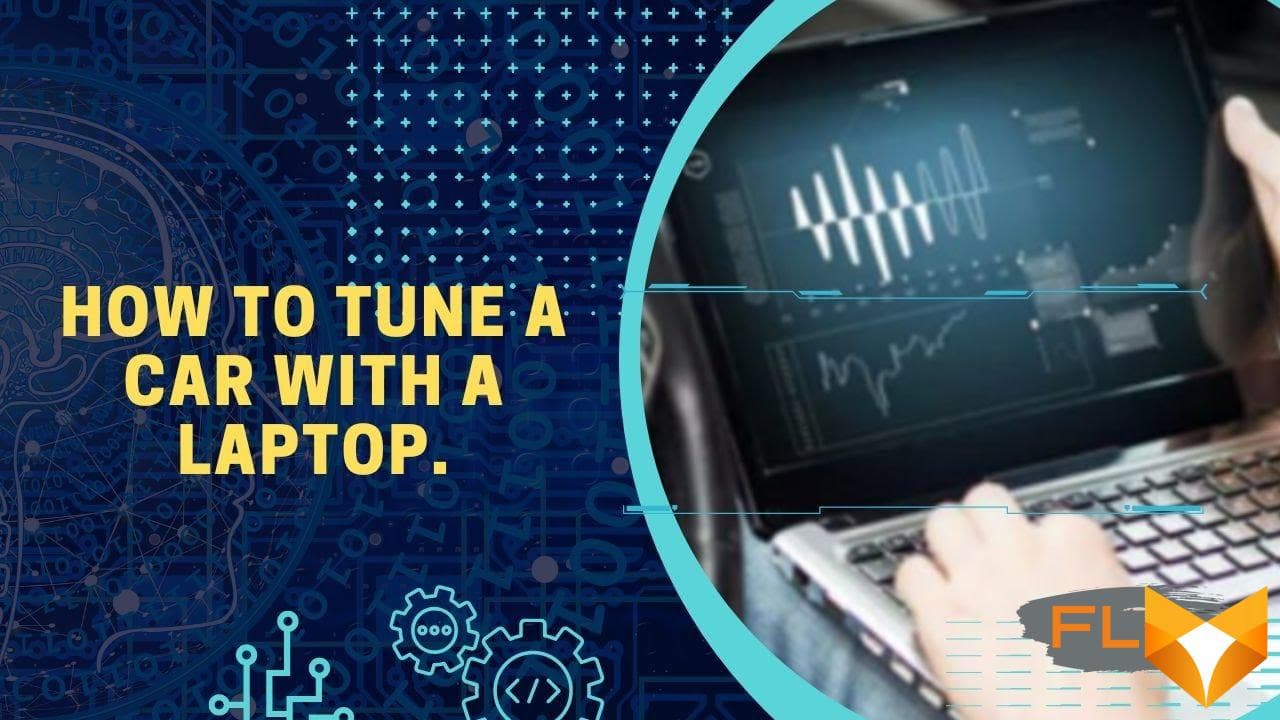


In the present age, technology has simplified tasks that were once considered laborious. One such example is the tuning of automobiles. Once a job for professional mechanics, this complex procedure is now something you can perform in the comfort of your own home, using your laptop. This comprehensive guide will navigate you through this process, in a clear and concise manner.
The ability to fine-tune your vehicle on your own is not just about the convenience and cost-saving benefits. It’s about gaining a deeper understanding of your car’s workings, optimizing its performance and efficiency to match your specific needs, and enhancing your overall driving experience. Moreover, as cars continue to become more computerized, these skills are becoming increasingly valuable.
Whether you are a car enthusiast eager to delve into your vehicles microcosm, or a driver looking for ways to optimize fuel efficiency or improve the performance of your car, this guide will serve as your roadmap. We will outline the steps, software, and hardware required, and provide the knowledge necessary to confidently tune your vehicle using your laptop.
Please note: While this task has been simplified, it still requires precision and meticulousness. A wrong adjustment could cause serious damage to your vehicle, so its critical to approach this with a clear understanding and utmost caution.
Understanding the Fundamentals of Vehicle Optimization
Consider car tuning akin to a medical checkup for your vehicle where it’s not always about fixing an issue, but about enhancing performance and efficiency. Acquiring knowledge on the essentials of vehicle optimization, what this process entails, and the reason for its importance is critical for any car enthusiast aiming to utilize their computer for car tuning.
What does vehicle optimization imply?
On a fundamental level, vehicle optimization, commonly referred to as car tuning, involves adjusting the operating parameters within a car’s engine control unit (ECU). The ECU is basically a cars brain where different software manages critical aspects like fuel delivery and ignition timing. This adjustment process can potentially boost the vehicle’s power output, enhance fuel economy, improve drivability or bolster performance under specific conditions. This process recalls using a personal laptop to make these adjustments!
Reasons behind vehicle optimization significance?
Understanding why vehicle tuning is essential extends beyond just the thrill of bolstering your car’s acceleration power. It plays a crucial role from various perspectives. Here are some noteworthy points:
- Increased Efficiency: Optimized parameters can enhance your vehicle’s fuel and engine efficiency, leading to considerable savings over time.
- Better Performance: Whether you want improved speed on the track, better off-road power, or smoother city driving, vehicle optimization can tailor your vehicle to suit your driving needs.
- Detection of Potential Issues: By diving deep into your car’s numerous systems, vehicle optimization can uncover potential problems that may otherwise remain unnoticed, till they turn major and costly.
- Personalization: Just as you personalize your desktop or smartphone, vehicle optimization allows owners to adjust their car to their personal driving style and preferences.
In conclusion, the art and science of car tuning involves a blend of mechanical knowledge, software skills, patience, and the love of experimentation. In the hands of a skilled operator, it engenders not only performance enhancements but also contributes to the vehicle’s long-term health.
Diving into the World of Automobile Engine Management Systems
Understanding the intricate systems that operate under your car’s hood is crucial for effective electronic car tuning. One of the key components of modern vehicles is the engine management system (EMS). This vital system is the car’s brain, controlling essential functions like fuel injection, spark timing, and a host of other features.
Defining the Automobile Engine Control Platform
The EMS, at its core, is a complex technology that optimizes the vehicle’s performance. Essentially, it’s a network of sensors and actuators working in harmony. Information from sensors meticulously monitors various engine factors, like air density, engine speed, and coolant temperature. After collecting and analyzing these details, the EMS sends commands to the actuators, such as the fuel injectors or ignition coils, resulting in a perfectly timed process that is fine-tuned for maximum performance and efficiency.
The primary part of the EMS is the engine control unit (ECU). The ECU supervises the data from numerous sensors in real-time, making calculations and sending out corrective signals. This emission control, ignition timing, and fuel distribution translates into optimal performance, fuel efficiency, and lower pollution.
- Fuel Injection: Fuel must be delivered to the engine at the correct rate and at the right time. The EMS manages this process by controlling the fuel injectors that spray fuel into the engines cylinders before ignition.
- Spark Control: The EMS calculates the optimal timing for the spark that ignites the fuel-air mixture in the engine’s cylinders. Incorrect timing can lead to a decline in power, economy, or even damage to the engine.
- Idle Speed: When the car is idling, the EMS adjusts the amount of fuel entering the system as well as the spark timing to maintain a smooth idle speed.
Modern EMSs are far more sophisticated than these basic functions suggest, incorporating features ranging from misfire detection to control of electrically heated oxygen sensors.
Understanding the mechanisms of how the engine management system works is a stepping stone to exploiting the power potential of your engine using your laptop for tuning. This practice has become increasingly prevalent amongst car enthusiasts seeking to maximize the potential of their vehicles for performance and efficiency.
Understanding the Essential Tools for Amplifying Automobile Performance via Computer
Tuning your car using your computer is indeed a futuristic approach to enhancing your vehicle’s performance. However, to accomplish this, you’ll need a combination of specific hardware and software. Let’s delve deeper into what’s needed to supercharge your automobile through laptop tuning.
Required Hardware for Fine-Tuning Cars Using a Laptop
On-Board Diagnostic Tool (OBD): The OBD is a vital hardware tool you’ll need to connect your laptop directly to your car. This comes in the form of a cable that usually has a USB connection on one end (for the laptop) and an OBD-II connection on the other (for the car).
Wideband Oxygen Sensor: Also known as an air/fuel sensor, this tool is handy for monitoring the fuel mixture in your car to ensure optimal performance. It provides real-time feedback so you can make necessary adjustments.
Note: It’s important to know that while most modern cars come with their oxygen sensors, they might not be as broad-ranging or as precise as after-market wideband sensors.
Car Software Mandatory for Vehicle Optimization via Laptop
Engine Control Unit (ECU) Software: The ECU software allows you to communicate with your vehicle’s ECU, a computer system that controls the electronic elements of your car. The appropriate ECU software, such as tuning software, will enable you to fine-tune your car’s performance by modifying settings such as air-fuel ratio, ignition timing, and boost pressure.
Data Logging Software: This type of software records the data from your car’s sensors over time, helping you spot trends and patterns or diagnose problems. It’s an essential tool when you’re trying to identify performance issues or verify your tuning changes have had the desired effect.
Armed with the right hardware and software, you can alter your car’s performance to fit your driving style and preferences, unlocking its potential beyond the parameters set by the car’s original manufacturer.
Preparing Your Laptop for Vehicle Calibration
Before commencing with the process of vehicle calibration, make sure your laptop is set up and ready. A couple of necessary steps and precautions should be employed to make your laptop ready for use in tuning automobiles. These steps not only ensure that the tuning process is smooth, but also guarantee the safety of your laptop and the vehicle you’re working on.
Picking the Right Software
The first step to getting your laptop ready for vehicle calibration is choosing the right software. There are numerous software platforms available for vehicle tuning, with different options tailored for beginners, intermediate users, and professionals. Some of the attributes to consider when selecting a tuning software include its compatibility with your laptop’s operating system, its user interface, its capabilities, and its cost. Make sure to research each software option thoroughly to ensure it can cater to your specific tuning needs.
Acquiring the Necessary Hardware
Aside from the tuning software, certain hardware is fundamental in aiding the car tuning process. This may include cables, adapters, and a reliable power source. Specifically, the OBD2 (On-Board Diagnostics 2) cable is essential as it connects your laptop to your car’s diagnostics system. Other useful hardware accessories may include USB extension cables and a separate power supply to ensure that your laptop does not run out of battery in the middle of the process.
Securing a Stable Power Source
Another essential consideration is maintaining a stable power supply for your laptop throughout the tuning process. This is because tuning can take a substantial amount of time, depending on the complexity of the work and the current status of the car. It’s advisable to have a separate power source or charger to maintain your laptop’s battery life.
Creating a Safety Backup
Finally, before tweaking any setting on a vehicle, it’s imperative to create a backup of the car’s factory settings. Most tuning software allows for this backup, which can be critical if the car doesn’t respond well to the tuning, or in case of any mishap during the calibration process. A backup ensures that you can easily reinstate the original settings, saving you from potential problems.
Establishing a Connection Between Your Personal Computer and Vehicle’s Electronic Control Unit
Advanced technology in car diagnosis has made it possible to seamlessly connect your laptop to your car’s computer. This connection enables you to assess and tune the engine, increasing the vehicle’s performance. It is handy, especially when diagnosing issues and providing intuitive optimizing solutions.
Steps in Linking your Personal Computer to Your Car’s Electronic Control Unit
The very first step is to ensure that your software is functioning well on your laptop. The software is critical as it will interpret the data from the Electronic Control Unit (ECU) and help in the tuning process.
- Installing Software: Start by acquiring a car tuning software compatible with your vehicle. This software can be obtained from online sources or automotive stores. Import the software into your laptop and run the setup. Ensure that you follow the instructions carefully for a successful installation.
- Acquiring a Hardware Interface: You will require a hardware interface to connect the laptop to your car’s ECU. These devices are often available at car part retailers or online. The hardware can be a USB or Bluetooth device that plugs into the OBD2 port on your car.
- Connecting the Interface: Connect the hardware interface to the laptop and the car. This can be done by plugging it into the laptop’s USB port and the car’s OBD2 port. Ensure that the drivers of the interface are installed correctly in your laptop.
- Running the Software: Start your vehicle, followed by your laptop. Subsequently, initialize the car tuning software on your laptop. Follow the software’s instructions to connect to the ECU. Once it is successfully connected, you can now access and interact with the ECU via your laptop.
Linking up your personal computer with your car’s ECU can provide you with a range of interesting possibilities. This technology opens up a new world of car diagnostics and tuning options right in your garage. However, it is crucial to be careful and use this technology responsibly. Incorrect changes to the ECU settings can cause significant damage to your vehicle.
Understanding and Deciphering Vehicle Performance Indications Using Your PC
Modern cars are complex machines with numerous advanced technologies. Using computers to fine-tune these high-tech machines has become increasingly popular among car enthusiasts. A crucial aspect of this tuning process is being able to decipher and comprehend the performance data provided by the vehicle’s on-board diagnostics system (OBD).
When this information is displayed on your laptop, it can provide significant insights into your car’s health and functionality. However, understanding what the data means can be a daunting task if you don’t know what to look for. Here are some of the key figures you will encounter and how to interpret them.
Key Performance Data
- Fuel Trim: This is an indication of how much fuel your vehicle is consuming. Negative numbers signify that the car is running lean (using less fuel), while positive numbers indicate a rich condition (using more fuel). Monitoring this can help you tune your car for better fuel efficiency.
- Oxygen Sensor Output: The output of the oxygen sensor is crucial for understanding whether the fuel-air mixture in your car’s engine is optimal. Ideally, this value should oscillate quickly between rich and lean conditions.
- Ignition Timing: This shows when the spark plug ignites the fuel-air mixture in each cylinder. Most vehicles will have a slightly advanced ignition timing, which can be tweaked to improve performance.
- Engine Coolant Temperature: This value should ideally be in the middle range. Extremely high or low temperatures may indicate issues with your car’s cooling system.
By reading and interpreting these figures, you can manipulate your car’s parameters accordingly to optimize its output and performance. Nonetheless, this should always be done cautiously to avoid damaging the car’s engine or any other key components.
Furthermore, there are also numerous software available that streamline this process, providing real-time diagnostics and easier data interpretation. Remember, with the right knowledge and tools, your laptop can become a powerful car tuning device.
Grasping the Concept of Safely Modifying Car Performance Variables
When seeking to enhance your vehicle’s performance, you might find yourself considering the option of using your laptop to change specific car performance variables. It’s crucial to understand that, although thrilling, this project comes with a substantial level of risk if not done correctly. Hence, garnering the knowledge of safe practices is paramount.
Introducing Modifications Gradually
One of the significant steps towards ensuring safe modifications includes gradually introducing changes. Abrupt changes can throw off the car’s system, leading to potential damage. It’s also easier to identify and correct potential problems when changes are implemented slowly.
Familiarizing Yourself with the Car’s ECU
At the heart of your car’s performance is its Electronic Control Unit (ECU). The ECU is the brain behind your engine’s function; hence understanding how it works is vital. There’s a plethora of information about your specific ECU model readily accessible online, which should be leveraged before attempting any modifications.
Selecting the Appropriate Software
It’s essential to choose the right software for tuning your car as the wrong software can lead to adverse effects. You should ensure that the software corresponds with your car’s make and model and that it is proven and reliable.
Monitoring the Modifications
After the modifications are made, it’s intrinsic to diligently monitor the car’s performance. Note any changes, however minor, as these could be signs of potential issues. Regular monitoring can mitigate the impact of any problems and prompting corrective measures when needed.
- Keep the car’s health in check: Regularly scrutinize each modification’s impact on the overall health of the car. Using diagnostic tools is a good practice to ensure everything is working as intended.
- Keep records: Keep track of every change you make. This will be of immense help in troubleshooting any issues that pop up at a later date.
- Take your time: Do not rush the process. Allow the car to adapt to the changes and gradually introduce new ones.
In essence, understanding the right practices, the intricate nature of your car’s performance system, and adopting the right software is the key to ensuring safe modifications of car performance variables.
Stepwise Tutorial on Tailoring a Car’s Performance with a Laptop
Do you wish to customize your car’s performance but are clueless about how to dig in? Fret not, for we are here to guide you on how to rev up your vehicle’s performance right from your laptop. Yes, you read that right. With a few software and hardware tools, you can enhance the horsepower, driveability, and fuel efficiency of your car.
A. Gathering Necessary Tools
Before we jump right into the process, here’s an essential list of tools that you will require:
- A Windows-based laptop.
- An On-Board Diagnostics II (OBD-II) connector cable.
- Software such as MegaSquirt, TunerStudio, or any other car tuning software that corresponds with your car’s make and model.
B. The Tuning Process
Once you have the necessary tools in place, follow the steps below to tune your car:
- Connect Your Laptop to the Car: Take the OBD-II connector cable and connect it to your car’s OBD-II port – usually hidden under the steering wheel or behind the glove compartment. Secure the other end of the cable into the USB port of your laptop.
- Initiate the Tuning Software: Launch your preferred tuning software. Make sure the software corresponds with your vehicle’s make and model correctly. In case it does not, consider updating the software or opt for the one that is compatible with your vehicle.
- Backup Your Car’s Existing Settings: Before making any changes to your car’s performance settings, it is crucial to back up your car’s existing settings. In case something goes wrong, you can always restore the original settings.
- Tweak the Settings as Desired: The software interface will provide you with a range of parameters to tweak according to your requirements. This often involves adjusting the ignition timing or the air/fuel ratio. However, proceed with caution and make little adjustments at a time. It may be a slow process, but it ensures you do not mess up your cars performance completely.
- Save and Apply the Changes: Lastly, do not forget to hit the ‘Save’ button. These changes will then be instantly applied to your vehicle’s engine control unit (ECU).
Remember, the process of tuning your car using a laptop requires careful attention and understanding. If you’re unsure about any aspect, it is always wise to consult with a professional to avoid potential mishaps.
Potential Hazards and Protective Measures in Car Adjustments
There are several potential hazards you may encounter while performing car modifications using your personal computer. It’s essential to understand these risks and take appropriate measures to avoid them, ensuring the safety of your vehicle and yourself.
Conceivable Threats
Improper adjustments can potentially damage your vehicle’s engine, resulting in costly repairs. This includes tuning it beyond its limits, causing unnecessary stress on the engine components. Also, it could be possible to introduce errors or bugs in the software modifications, leading to instability and unreliability.
Furthermore, incorrect modifications could lead to the vehicle failing its annual roadworthiness test. Finally, there is also the risk of voiding the car’s warranty, making any necessary repairs significantly more expensive.
Preventive Actions
- Proper Research: Before starting the process, it’s essential to research and understand the specifics of your vehicle’s make and model. Also, review the software and system you’ll be using to make the changes. Consult the manuals and seek advice from professional tuners if necessary.
- Conservative Adjustments: When making changes, it’s better to methodically tune in small increments, observing the effects each modification has on your vehicle. Extreme modifications may lead to damage or performance issues.
- Comprehensive Testing: After making adjustments, comprehensive testing is vital. This includes both simulated and road tests to confirm that the modifications made are suitable and have not introduced any detrimental effects to your vehicle’s operation.
- Backup: It’s wise to maintain a backup of the original settings. In the event of a problem with your modifications, this allows for prompt restoration of the original settings, minimising potential damage.
- Compliance: Finally, ensure that any modifications are within the legal limits. Certain changes may make the car illegal to drive on public roads, or render the vehicle unsafe. Therefore, always comply with the law and safety guidelines.
As a final precautionary measure, check with the car manufacturer’s warranty terms. Certain modifications may void the warranty, leaving you to shoulder the cost of possible repairs.
Mastery-Level Vehicle Adjustments Through Laptop Software
A Step Up in Vehicle Calibration
For those already acquainted with basic laptop-based car tuning software, it’s time to explore advanced tactics for optimizing your vehicle’s performance. Valuable knowledge in this field can empower you to fine-tune your car’s engine control unit (ECU), maximizing its potential and giving you an edge on the road.
Wise practitioners of sophisticated tuning know the importance of patience, precision, and the disciplined application of performance-enhancing modifications. It’s crucial to bring your car to its optimal condition before venturing into advanced tuning work. Therefore, administering maintenance such as oil changes, ensuring a well-functioning spark plug, and optimal tire pressure sets a sturdy foundation.
Profound Parameter Tweaks
An exciting frontier in the territory of laptop tuning lies in the tweaking of engine parameters. Utilising specialized software, we can adjust these configurations that affect power output, fuel efficiency, and responsiveness:
- Active fuel maps: Also known as fueling curves, adjustments here can improve fuel consumption rates.
- Spark advance maps: Modifying these curves can result in better power output.
- Rev limit: Tuning this setting affects the maximum RPM your engine can reach.
Keep in mind the goal of this advanced tuning is to find the perfect balance between performance, durability, and fuel efficiency. Exercise caution and ensure you’re making modifications within the manufacturer’s recommended guidelines.
Dyno Testing: The Proof is in the Performance
Once you’ve made your adjustments, it’s crucial to observe your handiwork in action. Using Dyno tests, experienced users can get real-time measurements of parameters such as engine horsepower, torque, or air-to-fuel ratios, while the car operates under controlled conditions. This aids in gauging the actual impact of the adjustments carried out and allows room for further fine-tuning if needed.
To sum up, with diligence and practice, enhancing your vehicle’s performance through laptop tuning software is a potent tool in the arsenal of any car enthusiast. However, as with anything requiring technical expertise, always ensure you’re appropriately informed and adequately equipped before setting out on this rewarding journey.
Essential Programs and Online Groups for Fans of Car Modification
When looking to modify your vehicle using your computer, there are a plethora of valuable programs and online communities available that can offer help, advice, and first-hand knowledge. The changing of a vehicles internal settings can seem daunting at first, but with the right tools and insight, it becomes a much more manageable task.
Unleashing Your Car’s Potential with the Right Software
Several software tools cater specifically to car enthusiasts looking to tune their vehicles. Programs such as MegaTunix, TunerStudio MS, and RomRaider are a great starting point. These platforms provide a downloadable interface that connects to your car’s computer, offering a comprehensive picture of whats happening under the hood.
MegaTunix, for example, provides real-time tuning and logging, dial and graph viewing, and comprehensive map editing for various engine management systems. On the other hand, TunerStudio MS takes car tuning a step further by providing advanced data-logging capabilities, including analysis, graphing, and histogram displays in real-time. Lastly, RomRaider is an open-source program known for its map editor where you can view, edit, and also tune your car’s control maps to improve its performance.
Online Spaces for Car Modification Lovers
The internet is also chock-full of engagement platforms where you can learn from other like-minded individuals. Websites like EcuTuners, The Tuning School, and EFI101 host a wealth of information in their forums. These digital communities allow you to ask questions, exchange experiences, and obtain expert opinions on your car modification journey.
- EcuTuners is a leading online community devoted to ECU (Engine Control Unit) tuning, with a highly active forum where users share ideas, tips, and advice.
- The Tuning School offers an international venue for car tuning enthusiasts, providing online courses, blogs, and a forum to discuss everything related to car tuning and adjustments.
- EFI101, on the other hand, is best known for its comprehensive courses on electronic fuel injection tuning. Their forum is home to plenty of useful discussions and tech tips for those looking to learn more about EFI tuning.
In conclusion, finding the software and community that suits your needs is a crucial step towards mastering the art of car tuning via your laptop. It’s through these tools and communities that you’ll find the support, resources, and advice you need on your tuning journey.
Keeping Your Vehicle in Top Shape After Customizing It with Computer Software
Once you’ve successfully altered your vehicle’s operation using personal computer software, adhering to a routine maintenance schedule is paramount. It’s crucial to continuously check your vehicle to ensure it’s running smoothly and efficiently, and to mitigate the chance of complications from changes made.
Careful Inspection is Key
Although you’ve managed to enhance the performance of your car through the software from your laptop, it doesn’t negate the necessity for regular physical inspections. As part of this, regularly checking the condition of various car parts such as spark plugs, fuel injectors, and air filters is important. This can help identify issues early before they evolve into major problems.
Fuel Economy Check
Adjustments made through your computer software might have implications on your car’s fuel economy. Be sure to keep track of your fuel consumption to ascertain any noticeable differences. An unexpected increase or decrease might indicate that the car isn’t running as efficiently as it could.
Routine Fluid Checks
Make sure to check your car’s various fluids frequently – oil, coolant, brake fluid, power steering fluid, and windscreen wash. Keeping these at optimal levels will aid in the smooth operation of your automobile. Each plays a crucial role in different parts of the car, and neglecting them can lead to unforeseen issues, irrespective of your computer-based tuning prowess.
- Oil: Enhances engine’s life expectancy
- Coolant: Prevents engine from overheating
- Brake Fluid: Ensures effective braking
- Power Steering Fluid: Facilitates easy control of the steering wheel
- Windscreen Wash: Keeps windshield clean and unobstructed
In conclusion, regularly maintaining your car after using laptop-based solutions to tune it should be your utmost priority. Remember, maximizing the longevity and performance of your car requires more than just computer-based tuning – a well-rounded maintenance routine is equally, if not more, important.
FAQ How to tune a car with a laptop:
Can tuning your vehicle with a laptop improve its performance?
Yes, tuning your vehicle with a laptop can help optimize its performance. This is achieved by adjusting the engine control unit (ECU) settings within a car to maximize its potential.
What should I do to maintain my car after it’s been tuned?
Regular maintenance is crucial even after tuning your car. This includes checking your car’s fluid levels, tire pressure, air filters, & changing the oil regularly. It’s also recommended to run diagnostics regularly to monitor car’s health & performance.
Can tuning with the laptop damage the car’s engine?
If done incorrectly, tuning your car via laptop can cause potential damage. Always ensure you understand what you’re adjusting within ECU & seek professional guidance if needed. Over-tuning or aggressive tuning can lead to overheating, mechanical wear and tear, and engine damage.
How often should I tune my car using my laptop?
Typically, most experts recommend tuning your car after any major hardware upgrades or changes. It’s not necessary to constantly change the settings unless something has changed within the car’s setup or you’re seeking to modify its attributes.
Do I need any special software for laptop tuning?
Yes, you require specific software to tune your car via a laptop. The software you need depends on your car’s make and model. Examples include Cobb Accessport, HP Tuners, and SCT Performance Tuners.
Is it legal to tune your car using a laptop?
The legality of tuning your car with a laptop depends on where you live and your local regulations. Some modifications could be illegal due to emission control regulations or safety concerns. Always check local laws before performing any software modifications to your vehicle.
